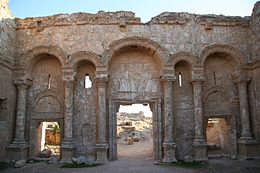Justinian plague effect on muslims up to 750AC.
As a result of the deaths of his top commanders in Syria, Umar appointed Yazid's brother and deputy, Mu'awiya ibn Abi Sufyan, commander of the army there, ultimately laying the foundation for the establishment of the Syria-centered Umayyad Caliphate by Mu'awiya in 661.[18] The historian Wilferd Madelung
surmises that the plague in Syria had precluded Umar from deploying
commanders more preferable to him from Medina and he thus appointed
Mu'awiya in lieu of a suitable alternative.[30]
The losses among the Muslim troops in Syria caused by the Amwas plague
contributed to Mu'awiya's heavy military reliance on older-established,
formerly Byzantine-allied and Christian Arab tribes in Syria,
particularly the Banu Kalb, who had largely stayed neutral during the fighting between the Muslims and the Byzantines in Syria during the 630s.[31]
The heavy toll on the indigenous Christian population and increased emigration from Syria as a result of the plague of Amwas may have been a contributing factor in the increased settlement of Syria by the Arabs and their penetration of local society during Umayyad rule (640s–750).[32] According to the historian Lawrence Conrad, the Arabs, relying on revenue from the poll tax collected from the non-Arabs in the conquered regions, may not have intended to settle Syria, but were forced to repopulate the deserted countryside in the aftermath of the plague.[32] The policy of settling Arab tribesmen on the land proved exceptional; in other conquered areas, such as Iraq, early Arab settlement was mostly confined to newly built garrison cities.[32]
Amwas was replaced as the Arabs' headquarters in Palestine first by Lydda and/or Jerusalem, followed by Ramla, which was founded by the Umayyad caliph Sulayman ibn Abd al-Malik in the early 8th century.[9][33] As late as the 1870s a well in the village of Amwas bore the name bir al-ta'un (well of the plague).[34] Jabiya remained the Arabs' principal military camp in Syria until the reign of Sulayman.[17]
Recurrences
There were recurrences of the plague in Syria–Palestine about every decade between 688/89 and 744/45.[35] "The Umaiyad [sic] dynasty was literally plagued by this disease", in the words of Dols.[36] The deaths of the Umayyad caliphs Mu'awiya II (r. 683–684), Marwan I (r. 684–685), Abd al-Malik (r. 685–705), Sulayman (r. 715–717) and the Umayyad governors in Iraq al-Mughira ibn Shu'ba (r. 661–671) and Ziyad ibn Abihi (r. 685–673) may all possibly have been caused by the plague epidemics in Syria and Iraq.[37][21] The caliphs routinely withdrew from the cities to their desert palaces when the plague emerged during the summer months.[36] Notable among them was Caliph Hisham (r. 724–743), who preferred his palace at Rusafa over Damascus because he viewed the latter to be unhealthy.[38]
Dols speculates that the frequent recurrences may have consistently undercut natural population growth in Syria–Palestine, the center of the Umayyad Caliphate, and weakened Umayyad power.[35] Concurrently, Arab tribal migrations into the far eastern province of Khurasan, which was apparently spared from the plague epidemics, may have led to the lopsided growth and predominance of the eastern half of the Caliphate and the rise of the Abbasid Movement there, which ultimately toppled the Umayyads in 750.[35] In the view of Conrad, by the end of these plague cycles, the Umayyads has lost practical control of the eastern Caliphate and "it is tempting to view the interminable plagues of the last years of the dynasty as an important factor in the victory of the Abbasid revolution".[39]

Comments
Post a Comment